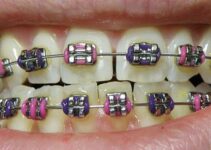Oral hygiene has a way of affecting every other part of the body. Oral health is a key indicator of general well-being and vice versa. Knowing that oral disease is linked to heart disease, diabetes, cancer, and a host of other conditions, physicians are now applying a holistic approach to oral care. Good oral hygiene is important to reduce the occurrence of tooth decay, cavities, and periodontal diseases.

Fluoride Toothpaste
Many toothpastes today contain fluoride as a means of controlling dental plaque and preventing tooth decay. Evidence proves that using fluoride toothpaste to brush day and night reduces the lifetime risk of developing dental problems. Fluoride is a naturally occurring mineral found in the environment. It functions by clearing microbial plaque. Plaque produces acidic content that destroys enamel which causes demineralization and sulfur which causes halitosis, also known as bad breath.
Benefits of Fluoride Toothpaste
A systematic review done by Wright et al. sought to assess the effectiveness of fluoridated toothpaste in the prevention of dental caries. They assessed the use of fluoride at different concentrations and against control. In all the studies they reviewed, they recorded reductions in the occurrence of dental caries. The results of another review by Walsh et al. also recorded a significant reduction in the occurrence of dental cavities.
A randomized control trial carried out by Nehme et al. achieved remineralization of softened enamel after brushing it with sodium fluoride-containing 1150ppm fluoride. They recorded remineralization of enamel after 60 minutes of exposure to fluoride. This shows that Fluoride promotes the strengthening of enamel. Marsh et al. also discovered that fluoride is exceptionally efficacious in reducing the amount of dental plaque.
Importance of Tongue Brushing
Just like the teeth, the tongue also needs to be cleaned. As a result, it is important to incorporate proper brushing tongue techniques into your routine to enhance oral hygiene. The tongue has always been a neglected part of the mouth when it comes to oral hygiene. Brushing the surface of the tongue with fluoride toothpaste is important to prevent bad breath and the occurrence of periodontal diseases.
The tongue is a spongy muscular structure that contains projections, grooves, and fissures on its surface. It also contains the most amount of bacteria than any other structure in the mouth. If not removed, microorganisms can accumulate in these pockets. Sulfur-producing bacteria, in particular, break down amino acids leading to halitosis. Accumulation of bacteria on the tongue can also disturb the proper functioning of taste buds.
A randomized control trial done by Pranav et al. recorded a significant reduction in the total bacterial load after analyzing the tongue samples of the participants. The analysis showed a significant reduction in the Actinobacteria and Proteobacteria colonizers after the application of the tongue cleaning method with sodium fluoride-containing toothpaste.
In another randomized control trial, Choi et al. demonstrated the effectiveness of tongue brushing in the prevention of halitosis. They recorded a reduction in halitosis after accurate and thorough tongue cleaning. Among the causative factors of halitosis, the presence of tongue plaque is the most important. Daily cleaning produced a reduction in the net bacteria volume.
These studies show the importance of tongue hygiene and the added effects of using fluoride toothpaste for cleaning.
Conclusion
Each and every one of us has only one body to work with for the rest of our lives. It is then of the greatest importance that we take care of the body, treating it with the care and respect it deserves. One easy way to do this is by incorporating fluoride toothpaste and tongue brushing into our daily hygiene routines. Not only does this prevent cavities and other dental-related illnesses, but it also leaves your mouth feeling fresh all day long.
References
Jullien, S. (2021, September 1). Prophylaxis of caries with fluoride for children under five years. BMC Pediatrics. https://doi.org/10.1186/s12887-021-02702-3
Nehme, M., Parkinson, C., Zero, D. T., & Hara, A. T. (2019, April 17). Randomised study of the effects of fluoride and time on in situ remineralisation of acid-softened enamel. Clinical Oral Investigations. https://doi.org/10.1007/s00784-019-02900-5
Chhaliyil, P., Fischer, K. F., Schoel, B., & Chhalliyil, P. (2020). A Novel, Simple, Frequent Oral Cleaning Method Reduces Damaging Bacteria in the Dental Microbiota. Journal of International Society of Preventive & Community Dentistry, 10(4), 511–519. https://doi.org/10.4103/jispcd.JISPCD_31_20
Manju, M., Prathyusha, P., Joseph, E., Kaul, R. B., Shanthraj, S. L., & Sethi, N. (2015). Evaluation of the effect of three supplementary oral hygiene measures on salivary mutans streptococci levels in children: A randomized comparative clinical trial. European journal of dentistry, 9(4), 462–469. https://doi.org/10.4103/1305-7456.172616
FEEDBACK:



